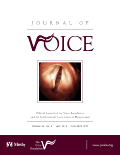
JOURNAL OF VOICE
Scope & Guideline
Uniting Disciplines to Enhance Vocal Well-being
Introduction
Aims and Scopes
- Voice Disorders and Treatment Approaches:
Research focusing on the diagnosis, treatment, and management of various voice disorders, including muscle tension dysphonia, spasmodic dysphonia, and vocal fold paralysis. This includes clinical trials, systematic reviews, and studies evaluating the effectiveness of different therapeutic interventions. - Acoustic and Physiological Voice Analysis:
Studies employing acoustic analysis, aerodynamic assessments, and physiological measurements to understand voice production mechanisms and identify characteristics of healthy versus disordered voices. - Vocal Health and Hygiene:
Research addressing the importance of vocal health education, prevention strategies, and the impact of vocal hygiene on voice quality, particularly among professional voice users such as teachers, singers, and actors. - Technological Innovations in Voice Assessment:
Exploration of new technologies and methodologies for voice assessment, including telepractice, machine learning applications, and advanced imaging techniques to enhance diagnostic capabilities and treatment outcomes. - Cultural and Psychological Aspects of Voice:
Investigations into the psychological and cultural influences on voice perception, identity, and self-assessment, particularly in diverse populations and among transgender individuals.
Trending and Emerging
- Telepractice and Remote Voice Therapy:
The rise of telehealth services has led to an increased focus on the effectiveness of remote voice therapy and assessment, especially following the COVID-19 pandemic. This trend highlights the need for accessible care and the adaptation of traditional methods to virtual platforms. - Voice Disorders Related to COVID-19:
A notable increase in research addressing voice disorders associated with COVID-19, including the effects of the virus on vocal health and the long-term implications for voice function among infected individuals. - Gender-Affirming Voice Training:
Emerging studies focusing on gender-affirming voice practices for transgender and non-binary individuals are gaining traction, reflecting a growing recognition of the importance of voice in gender identity and expression. - Machine Learning and AI in Voice Analysis:
There is a burgeoning interest in utilizing artificial intelligence and machine learning for voice assessment and diagnosis, indicating a shift towards data-driven approaches in understanding voice disorders. - Impact of Environmental Factors on Voice Health:
Research exploring the effects of environmental conditions, such as air quality and occupational hazards, on voice health is becoming increasingly relevant, particularly in relation to professional voice users.
Declining or Waning
- Traditional Vocal Pedagogy:
Research focused on conventional vocal training methods and pedagogical approaches seems to be less prominent. The journal appears to be shifting towards evidence-based practices and innovative techniques rather than traditional methods. - Basic Anatomy and Physiology of Voice Production:
Studies that primarily address fundamental anatomical and physiological aspects of voice production without a clinical or applied focus are becoming less common, as there is a growing emphasis on applied research that directly impacts clinical practices. - Generalized Voice Disorders Research:
There seems to be a decline in publications that broadly address voice disorders without specific contexts or populations. The journal is leaning towards more targeted studies that focus on specific demographics or conditions. - Historical Perspectives in Voice Research:
Research that provides historical context or reviews of past methodologies and findings in voice science is less frequent, indicating a shift towards contemporary issues and current advancements in the field.
Similar Journals
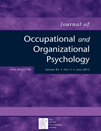
JOURNAL OF OCCUPATIONAL AND ORGANIZATIONAL PSYCHOLOGY
Innovating practices for employee well-being.JOURNAL OF OCCUPATIONAL AND ORGANIZATIONAL PSYCHOLOGY, published by WILEY, stands as a leading platform for scholarly research in the fields of applied psychology and organizational behavior. Since its inception in 1992, this reputable journal has been dedicated to advancing the understanding of psychological principles in workplace settings, providing a critical resource for researchers, professionals, and students alike. With an impressive impact factor and consistently ranked in the top quartiles (Q1) in both applied psychology and human resource management, it ranks #28 out of 230 in its category within Scopus, highlighting its significance and reach within the academic community. While the journal is subscription-based, it ensures broad accessibility to pivotal findings that spark innovation in organizational practices and employee well-being. Featuring empirical research, theoretical work, and case studies, the JOURNAL OF OCCUPATIONAL AND ORGANIZATIONAL PSYCHOLOGY is essential for anyone looking to deepen their understanding of the psychological complexities of work and the forces shaping organizational dynamics.
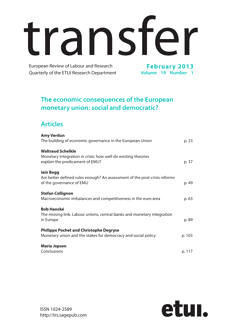
Transfer-European Review of Labour and Research
Empowering Scholars with Cutting-edge Labor ResearchTransfer-European Review of Labour and Research is a premier academic journal dedicated to advancing the field of labor relations and organizational behavior, published by SAGE Publications Ltd in the United Kingdom. With an impressive Q1 ranking in both Industrial Relations and Organizational Behavior and Human Resource Management for 2023, this journal stands out as a vital resource for researchers, practitioners, and students alike. It provides a platform for innovative research and critical discussions on labor and employment issues, promoting interdisciplinary approaches that address contemporary challenges in the workforce. Although not an open-access journal, it offers substantial value through its rigorous peer-review process, which ensures the publication of high-quality, impactful articles. With an ISSN of 1024-2589 and E-ISSN of 1996-7284, Transfer aims to bridge the gap between theory and practice, making it essential reading for anyone engaged in the dynamics of labor management and organizational development.
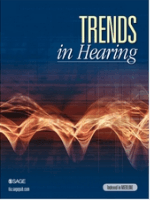
Trends in Hearing
Shaping the future of auditory health and technology.Trends in Hearing, published by SAGE Publications Inc, stands as a leading open-access journal dedicated to the rapidly evolving field of hearing science. With an ISSN of 2331-2165, it provides an invaluable platform for researchers, professionals, and students alike to disseminate and access pioneering research. Since its inception in 2014, the journal has garnered a strong reputation, maintaining a prestigious Q1 ranking in both Otorhinolaryngology and Speech and Hearing as of 2023. Additionally, its impressive Scopus rankings place it in the top tier of health professions, especially in speech and hearing (Rank #8/66, 88th percentile) and medicine (Rank #27/123, 78th percentile). With its commitment to accessibility and quality, Trends in Hearing aims to advance the understanding of auditory mechanisms, rehabilitation techniques, and the latest innovations in hearing technology, ensuring that critical insights and developments reach a global audience. Explore the latest trends and contribute to the discourse in this essential area of research.
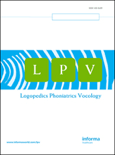
Logopedics Phoniatrics Vocology
Fostering Scholarly Dialogue in Speech SciencesLogopedics Phoniatrics Vocology, the distinguished journal published by TAYLOR & FRANCIS LTD, serves as a pivotal platform for the dissemination of research and clinical advancements in the intricate fields of speech, language, and communication sciences. With an ISSN of 1401-5439 and an E-ISSN of 1651-2022, this journal has gained recognition since its inception in 1991, reflecting its commitment to fostering scholarly dialogue until 2024. Ranked in the Q2 and Q3 quartiles across diverse categories such as Arts and Humanities, Medicine, and Speech and Hearing, it showcases a reputable standing, particularly with a 73rd percentile rank in Arts and Humanities. Although currently not an open-access publication, it offers vital insights and empirical research that are crucial for researchers, clinicians, and students in the field, positioning itself as an essential resource for those dedicated to improving communication health. Based in the United Kingdom, at 2-4 PARK SQUARE, MILTON PARK, ABINGDON OR14 4RN, OXON, ENGLAND, the journal invites contributions that explore interdisciplinary approaches and innovative practices in logopedics and related realms.
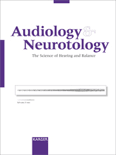
Audiology and Neurotology
Empowering the community with cutting-edge findings.Audiology and Neurotology, published by KARGER, stands at the forefront of research in the fields of otorhinolaryngology, audiology, and related neurosciences in Switzerland. With an impressive history of publication from 1996 to 2024, this journal caters to a diverse audience of researchers, clinicians, and students dedicated to advancing the understanding and treatment of auditory and balance disorders. Holding a significant Q1 category ranking in Otorhinolaryngology and Speech and Hearing and a commendable position in other related areas, it reflects a robust impact within its niche. Though currently operating under a subscription model, the journal remains accessible to an extensive readership striving to explore cutting-edge findings and implications for clinical practice. By disseminating high-quality research, Audiology and Neurotology continues to play a crucial role in shaping the landscape of audiological science and provides a platform for vital scholarly communication.

Public Law Review
Your Gateway to Critical Public Law AnalysisPublic Law Review is a distinguished scholarly journal published by LAWBOOK CO LTD, dedicated to the rigorous exploration and analysis of public law issues. As an essential resource for researchers, practitioners, and students alike, this journal provides a platform for the dissemination of critical legal scholarship, offering insights into contemporary public law developments, theory, and practice. With its commitment to maintaining high editorial standards, the Public Law Review plays a vital role in advancing knowledge and fostering debate within the legal community. Although not currently an open-access publication, it remains accessible through various academic repositories and libraries. The journal's ISSN 1034-3024 ensures its visibility within academic and professional circles, making it an indispensable reference for anyone interested in the evolving landscape of public law in Australia and beyond.
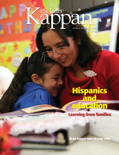
PHI DELTA KAPPAN
Connecting Researchers and Practitioners for Impactful LearningPHI DELTA KAPPAN, published by SAGE PUBLICATIONS INC, is a distinguished journal in the field of Education. With the ISSN 0031-7217 and E-ISSN 1940-6487, this journal holds a valuable position in the academic community, evidenced by its 2023 Scopus ranking of #690 out of 1543 in the Social Sciences Education category, placing it in the 55th percentile and earning a Q2 ranking. This journal aims to advance the professional and intellectual dialogue surrounding contemporary educational practices, policies, and research, making it an essential resource for researchers, educators, and policymakers. While not an open-access journal, it offers a platform that features rigorous peer-reviewed articles, insightful discussions, and empirical studies that shape the future of education. With its coverage spanning significant converged years including 1981 and from 1993 to 2024, PHI DELTA KAPPAN remains committed to fostering an understanding of pressing educational challenges and innovations.
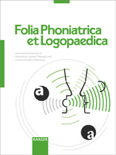
FOLIA PHONIATRICA ET LOGOPAEDICA
Exploring the Frontiers of Speech and LinguisticsFOLIA PHONIATRICA ET LOGOPAEDICA, published by KARGER in Switzerland, stands as a premier journal in the fields of linguistics, phonetics, and speech therapy. With a rich history beginning in 1949 and spanning multiple decades, this esteemed journal has maintained a commitment to advancing research and scholarship in communication sciences, covering crucial topics relevant to both clinical practice and theoretical frameworks. Holding a prestigious Q1 ranking in Linguistics and Language, the journal also achieves high standings in related categories, with notable placements in Speech and Hearing and Nursing. Researchers, professionals, and students will find the insights and findings published within its pages to be invaluable for both academic pursuits and practical applications. Access options are available through traditional subscription models, enhancing its accessibility for dedicated scholars seeking to contribute to or expand their knowledge in this dynamic field.
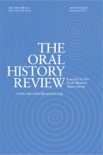
Oral History Review
Where Oral Traditions Meet Rigorous Research.Oral History Review is a premier journal devoted to the field of oral history, meticulously published by ROUTLEDGE JOURNALS, TAYLOR & FRANCIS LTD. With a long-standing history dating back to 1973, this journal has consistently provided an indispensable platform for scholars and practitioners to explore the intricate narratives that shape our understanding of the past. Based in the United Kingdom, it proudly holds a prestigious Q2 ranking in the field of history as of 2023, with an impressive Scopus rank of #204 out of 1760, placing it in the 88th percentile within the Arts and Humanities category. While not offering open-access options, the journal remains pivotal for those in academia, providing well-researched articles that foster critical discussions and innovative methodologies in oral history. By combining rigorous scholarship with compelling storytelling, Oral History Review is an essential resource for researchers, professionals, and students engaged in uncovering the rich tapestry of human experiences.

Frontiers of Narrative Studies
Advancing Interdisciplinary Insights into NarrativeFrontiers of Narrative Studies, published by Walter de Gruyter GmbH, is an essential journal dedicated to exploring the multifaceted dimensions of narrative theory and its applications across various disciplines. With its ISSN 2509-4882 and E-ISSN 2509-4890, this journal serves as a pivotal platform for researchers, professionals, and students interested in the intricate relationships between narrative and culture, literature, and digital media. The journal places a strong emphasis on innovative methodologies and interdisciplinary approaches, making it a vital resource for those seeking to advance their understanding of narrative structures and their significance in contemporary society. Additionally, Frontiers of Narrative Studies encourages open discussions and critical analyses, facilitating a rich dialogue among scholars from various fields. With its commitment to quality and scholarly rigor, this journal is positioned to impact both academic discourse and practical applications in the study of narrative.